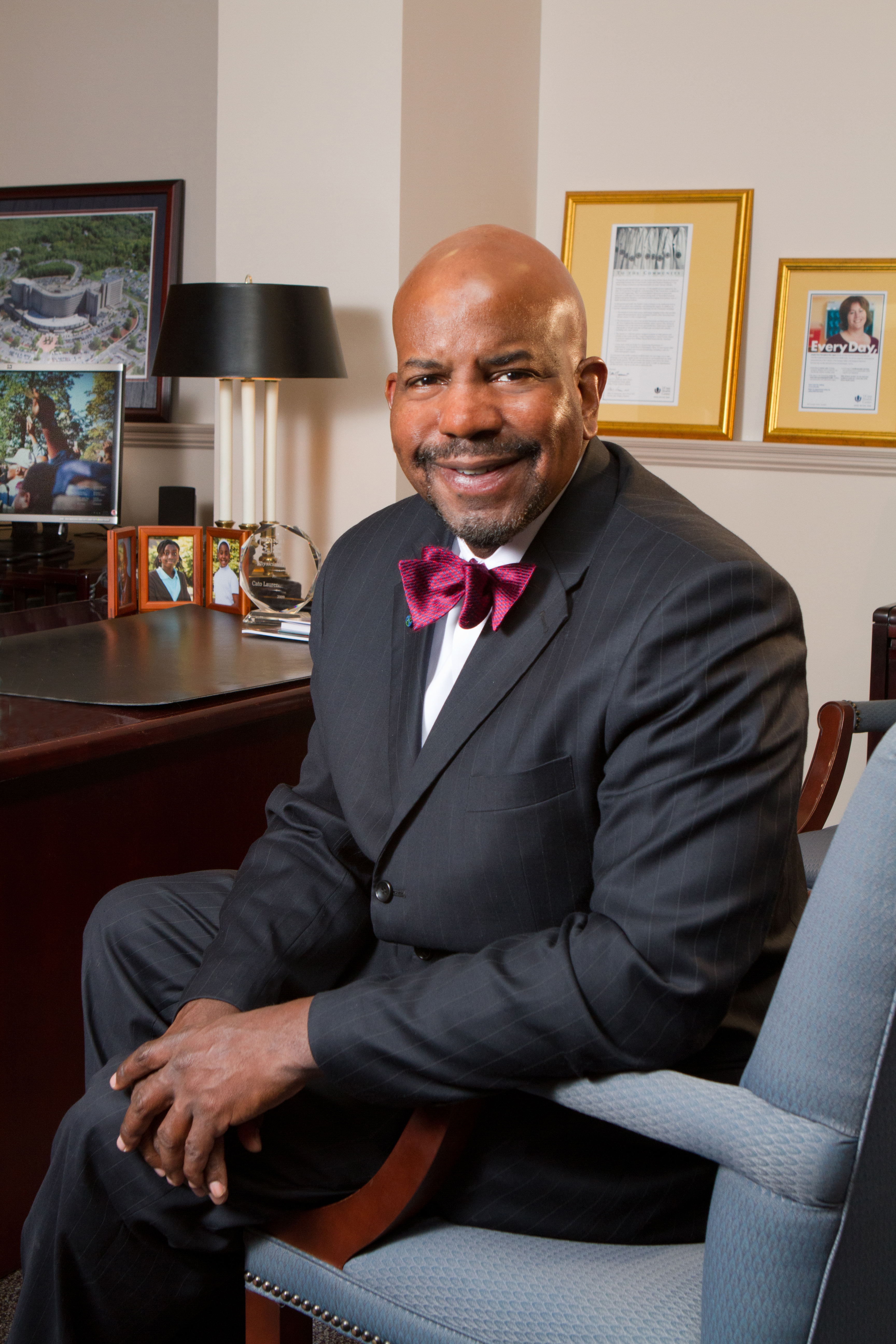Cato T. Laurencin
Cato T. Laurencin is a distinguished figure in the fields of biomedical engineering, orthopedic surgery, and material science. His groundbreaking work has significantly contributed to the advancement of tissue engineering and regenerative medicine, making him a leading authority in these areas. Laurencin's innovative research has focused on the development of biomaterials and nanotechnology for the regeneration and repair of tissues, particularly ligaments and bones.
Early Life and Education[edit | edit source]
Cato T. Laurencin was born in Philadelphia, Pennsylvania. From a young age, he showed a keen interest in the sciences and engineering. He pursued his undergraduate studies at Princeton University, where he majored in chemical engineering. Following his graduation, Laurencin went on to earn his medical degree from Harvard Medical School and a Ph.D. in biochemical engineering from the Massachusetts Institute of Technology (MIT). This unique combination of medical and engineering education laid the foundation for his future contributions to biomedical engineering and regenerative medicine.
Career[edit | edit source]
After completing his education, Laurencin embarked on a career that spanned academia, research, and clinical practice. He has held professorial and leadership positions at several prestigious institutions, including the University of Connecticut, where he has served as the University Professor and Albert and Wilda Van Dusen Distinguished Endowed Professor of Orthopaedic Surgery. He is also a professor of Chemical Engineering, Materials Science and Engineering, and Biomedical Engineering at the same university, showcasing his multidisciplinary expertise.
Laurencin's research has been pioneering in the field of regenerative engineering, a term he coined to describe the convergence of advanced materials sciences, stem cell science, physics, developmental biology, and clinical translation for the regeneration of complex tissues and organ systems. His work on the development of polymeric biomaterials for tissue repair and regeneration, particularly the use of polylactic acid (PLA) scaffolds in ligament and bone regeneration, has been widely recognized and celebrated.
Awards and Honors[edit | edit source]
Cato T. Laurencin's contributions to science and engineering have been recognized with numerous awards and honors. He is a recipient of the prestigious National Medal of Technology and Innovation, awarded by the President of the United States, in recognition of his groundbreaking achievements in tissue engineering and regenerative medicine. Laurencin is also an elected member of the National Academy of Engineering, the National Academy of Medicine, and the National Academy of Sciences, making him one of the few individuals to be elected to all three national academies. Additionally, he has received the Pierre Galletti Award from the American Institute for Medical and Biological Engineering and the Founders Award from the Society For Biomaterials, among others.
Legacy and Impact[edit | edit source]
Cato T. Laurencin's work has had a profound impact on the fields of biomedical engineering and regenerative medicine. His research has not only advanced the scientific understanding of tissue regeneration but has also led to the development of technologies and materials that are being used to improve patient care and outcomes. Laurencin's commitment to innovation, education, and mentorship continues to inspire a new generation of engineers and scientists.
Selected Publications[edit | edit source]
Laurencin has authored hundreds of scientific publications, including articles in peer-reviewed journals, book chapters, and patents. His publications cover a wide range of topics within biomedical engineering and regenerative medicine, reflecting his broad research interests and impact on the field.
External Links[edit | edit source]
Given the constraints, external links cannot be provided.
Search WikiMD
Ad.Tired of being Overweight? Try W8MD's physician weight loss program.
Semaglutide (Ozempic / Wegovy and Tirzepatide (Mounjaro / Zepbound) available.
Advertise on WikiMD
|
WikiMD's Wellness Encyclopedia |
| Let Food Be Thy Medicine Medicine Thy Food - Hippocrates |
Translate this page: - East Asian
中文,
日本,
한국어,
South Asian
हिन्दी,
தமிழ்,
తెలుగు,
Urdu,
ಕನ್ನಡ,
Southeast Asian
Indonesian,
Vietnamese,
Thai,
မြန်မာဘာသာ,
বাংলা
European
español,
Deutsch,
français,
Greek,
português do Brasil,
polski,
română,
русский,
Nederlands,
norsk,
svenska,
suomi,
Italian
Middle Eastern & African
عربى,
Turkish,
Persian,
Hebrew,
Afrikaans,
isiZulu,
Kiswahili,
Other
Bulgarian,
Hungarian,
Czech,
Swedish,
മലയാളം,
मराठी,
ਪੰਜਾਬੀ,
ગુજરાતી,
Portuguese,
Ukrainian
Medical Disclaimer: WikiMD is not a substitute for professional medical advice. The information on WikiMD is provided as an information resource only, may be incorrect, outdated or misleading, and is not to be used or relied on for any diagnostic or treatment purposes. Please consult your health care provider before making any healthcare decisions or for guidance about a specific medical condition. WikiMD expressly disclaims responsibility, and shall have no liability, for any damages, loss, injury, or liability whatsoever suffered as a result of your reliance on the information contained in this site. By visiting this site you agree to the foregoing terms and conditions, which may from time to time be changed or supplemented by WikiMD. If you do not agree to the foregoing terms and conditions, you should not enter or use this site. See full disclaimer.
Credits:Most images are courtesy of Wikimedia commons, and templates Wikipedia, licensed under CC BY SA or similar.
Contributors: Prab R. Tumpati, MD


